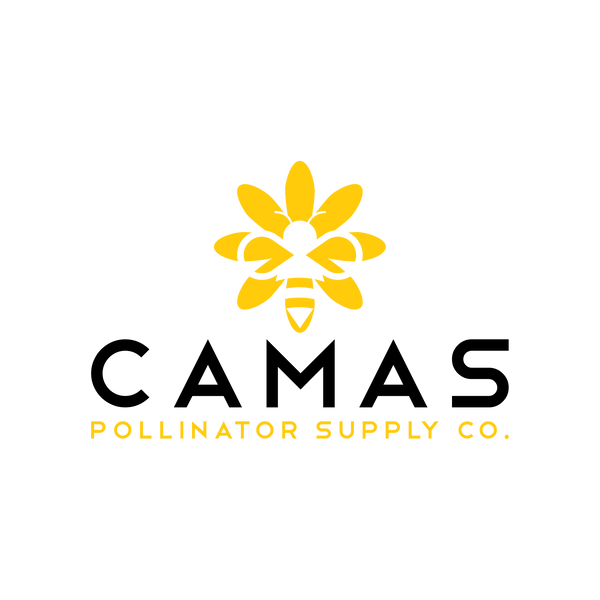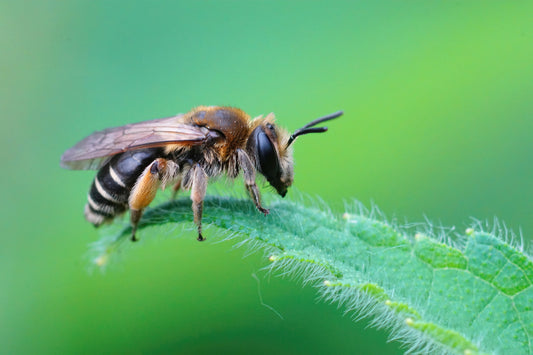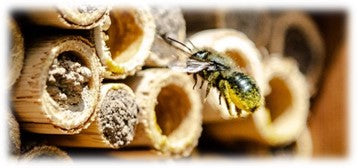The July heat is here, and so are the pests. But before you reach for that chemical spray, let me share what I learned the hard way about protecting our buzzing friends while keeping your garden thriving.
As I stood in my pollinator garden last July, watching aphids coat my prized bee balm while Japanese beetles devoured my butterfly bush, I felt like I was facing an impossible choice. Save my plants with harsh chemicals and risk harming the very pollinators I was trying to support? Or watch my carefully planned habitat get destroyed by summer pests?
That moment of frustration led me to discover something remarkable: the most effective pest management for pollinator gardens isn't about elimination—it's about balance. And the solutions that work best are often the gentlest ones.
If you're facing similar challenges this summer, you're not alone. Here are the three biggest pest problems plaguing pollinator gardens right now, and the natural solutions that actually work.
Challenge #1: The Aphid Invasion That's Choking Your Blooms
The problem: Aphids multiply faster in summer heat, clustering on tender new growth and flower buds. They weaken plants and reduce nectar production just when pollinators need it most.

Why it matters now: July and August are peak foraging months for bees and butterflies. Every flower counts.
The Natural Solution That Works
Beneficial insect recruitment is your secret weapon. Instead of killing aphids directly, invite their natural predators to do the work for you.
Your 4-Step Aphid Management Plan:
-
Plant ladybug magnets nearby: Dill, fennel, and yarrow attract adult ladybugs who will lay eggs near aphid colonies
-
Create lacewing hotels: Bundle hollow stems or drill holes in untreated wood blockslacewings are aphid-eating machines
-
Use the "blast and wait" method: Spray aphids off with water in the early morning, then let predators find the scattered survivors
-
Tolerate small populations: A few aphids actually help maintain beneficial insect populations
Pro tip for beginners: You can buy beneficial insects online, but attracting native predators creates a self-sustaining system that works year after year.
Challenge #2: Japanese Beetles Are Destroying Your Butterfly Buffet
The problem: These metallic green destroyers peak in July, skeletonizing leaves and flowers on plants that butterflies depend on.

Why traditional traps backfire: Beetle traps actually attract more beetles to your area than they catch, a mistake I made in my first year of pollinator gardening.
The Companion Planting Strategy
Strategic plant placement can redirect beetles away from your most valuable pollinator plants.
Your Beetle Diversion Plan:
-
Plant beetle "decoys" 30+ feet away: Four o'clocks, evening primrose, and wild bergamot attract beetles away from prime pollinator areas
-
Use aromatic barriers: Ring vulnerable plants with catnip, rue, or tansy—beetles hate these scents
-
Time your hand-picking: Early morning when beetles are sluggish, drop them into soapy water
-
Encourage natural predators: Spiders, birds, and parasitic wasps all help control beetle populations
For butterfly gardeners specifically: Focus protection on late-summer bloomers like joe-pye weed and goldenrod—these are crucial for monarch migration fuel.
Challenge #3: Caterpillars vs. Butterflies—The Identity Crisis
The problem: Those "pest" caterpillars eating your plants might actually be future butterflies. But how do you tell beneficial larvae from destructive ones?

The learning curve: I once removed dozens of black swallowtail caterpillars from my parsley, thinking I was protecting my herbs. I was actually destroying the next generation of pollinators.
The Identification and Habitat Solution
Knowledge-based management helps you protect the right caterpillars while managing truly problematic ones.
Your Caterpillar Assessment Guide:
-
Learn your local butterfly larvae: Download a regional butterfly identification app or guide
-
Create designated "nursery areas": Let native plants in one section go wild for caterpillar habitat
-
Practice selective tolerance: Allow some leaf damage on host plants—it's the price of butterfly magic
-
Relocate rather than eliminate: Move unknown caterpillars to wild areas instead of destroying them
Quick ID tip: Butterfly caterpillars are usually solitary and move slowly. Moth caterpillars (often the destructive ones) tend to cluster and move quickly when disturbed.
Your 5-Step Natural Pest Management Action Plan
Ready to transform your approach? Here's your immediate summer strategy:
Week 1-2: Assessment and Setup
-
Walk your garden daily, noting pest locations and beneficial insect activity
-
Install or plant beneficial insect habitats near problem areas
-
Remove any chemical pesticides from your routine
Week 3-4: Active Management
-
Begin hand-picking and water-blasting techniques
-
Plant beetle decoys and aromatic barriers
-
Start photographing unknown caterpillars for identification
Week 5-8: Monitor and Adjust
-
Track which methods work best in your specific conditions
-
Adjust plant placement based on pest patterns
-
Celebrate beneficial insect sightings—they're your success metrics
The Bigger Picture: Building Resilience, Not Dependence
Here's what surprised me most about natural pest management: the goal isn't a pest-free garden, it's a balanced ecosystem. When you support beneficial insects, they handle pest control for you. When you choose plants strategically, you redirect problems instead of fighting them.
This approach takes patience, especially if you're coming from conventional gardening methods. But by August, you'll start seeing the payoff: more beneficial insects, healthier plants, and a garden that works with nature instead of against it.
Your garden doesn't need to be perfect to be a pollinator paradise. A few chewed leaves and the occasional aphid cluster are signs of a living, breathing ecosystem—exactly what our buzzing friends need to thrive.
What's your biggest summer pest challenge? Share your experiences in the comments below, and let's build a community of pollinator gardeners who support each other through the learning process.
Ready to dive deeper? Join our newsletter for seasonal pollinator gardening tips delivered right to your inbox. Because every garden has the potential to be a sanctuary, pests and all.




